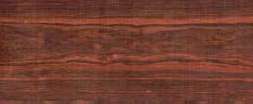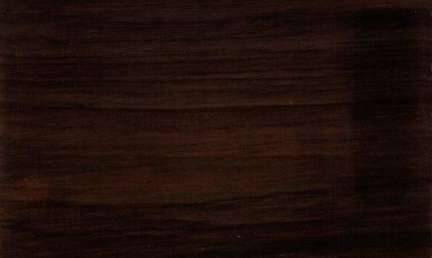     
Brazilian rosewood (Dalbergia nigra)
Family: Leguminosae
Common names: Babia rosewood, Bahia rosewood, Brazilian rosewood, Caa-biuna, Cabeuna, Cabiuna, Cambore, Camboriuna, Caviuna, Jacaranda, Jacaranda cabiuna, Jacaranda de Brasil, Jacaranda wood, Jacaranda-da-bahia, Jacaranda-preto, Jacaranda-rajado, Jacaranda-roxo, Jacarandaholz, JacarandJacardanda de Brasil, Legno di jacaranda, Madera de palisandro, Marnut, Palisander, Palisander wood, Palisanderholz, Palissander, Palissandre da Brl, Palissandre du bresil, Palissandro, Pau preto, Rio rosewood, Rosewood, South American rosewood, Urauna
Distributed in: Brazil, India (Latin America, Oceania and S.E. Asia)
Distribution overview: Brazil (Bahia, Espto Santo, Minas Gerais, Rio de Janeiro, SPaulo). The species is encountered equally in primary and secondary formations, occurring on soils of low natural fertility, deep clay and clay-sand soils with good drainage. It is able to tolerate dry conditions.
Common uses: Bedroom suites, Billiard-cue butts, Boat building (general), Bobbins, Boxes and crates, Brush backs & handles, Building materials, Cabinetmaking, Chairs, Chests, Decorative plywood, Decorative veneer, Desks, Dining-room furniture, Drawer sides, Drum sticks, Figured veneer, Fine furniture, Flooring, Furniture , Furniture, Handles, Handles: woodworking tools, Heavy construction, Interior construction, Joinery, Kitchen cabinets, Living-room suites, Marquetry, Mine timbers, Musical instruments , Musical instruments, Musical instruments: piano, Office furniture, Organ pipes, Paneling , Paneling, Piano keys, Pianos , Picker sticks, Plywood, Poles, Radio - stereo - TV cabinets, Railroad ties, Shade rollers, Shafts/Handles, Shuttles, Sounding boards, Specialty items, Spindles, Spools, Sporting Goods, Stencil & chisel blocks, Sucker rods, Tool handles, Turnery, Umbrella handles , Vehicle parts, Veneer: decorative
Product sources: Brazillian rosewood is scarce in the more accessible areas because of over-harvesting, but some timber from the species is available from environmentally responsible sources. Supplies of Brazilian rosewood are very limited because of shortages, making it quite expensive. Related species are available on the market as substitutes for true Rosewood.
Environment profile: Extinct, Endangered, Vulnerable, or Rare within its range
Tree size: Trunk diameter is 200-250 cm
Colors: the heart isYellow, Yellow to golden-yellow to orangeand the sapwoodWhite to yellow, Yellow.The grain isWeak figure, the textureMedium to coarseand the lusterMedium
Natural durability: Susceptible to insect attack, Very durable
Odor: May have a distinctive taste
Kiln Schedules: UK=C US=T3C2/T3C1 Fr=3
Kiln Drying Rate: Rapid
Drying Defects: Slight end splitting, Slight surface checking
Ease of Drying: Requires slow and careful seasoning to prevent degrade.
Tree Identification: Bole/stem form is misshapen
Comments: Generally strong and durable High waste factor Since they are usually hollow. Usable volume may be reduced considerably after the undesirable sapwood is removed. Ironically, old trees with defective stems are reported to yield the most attractive material. Brazillian rosewood is far superior in hardness than any of the native N. American hardwoods used in furniture manufacturing. Rosewood is also the primary choice as a tonewood for the highest quality stringed musical instruments
Blunting Effect: Moderate
Boring: Vary from difficult to easy
Carving: Fairly Difficult to Very Difficult
Cutting Resistance: Moderate to saw
Gluing: Satisfactory gluing properties
Mortising: Fairly Difficult to Very Difficult
Moulding: Poor to Very Poor
Movement in Service: Poor to Very Poor
Nailing: Pre-boring recommended, Very Good to Excellent
Planing: Fairly Difficult to Very Difficult
Resistance to Impregnation: Resistant sapwood
Response to hand tools: Responds Readily
Routing recessing: Fairly Difficult to Very Difficult
Veneering qualities: Suitable for slicing
Steam bending: Very good
Screwing: Possible if prebored, Very Good to Excellent Results; Turning: Good results
Polishing: Very Good to Excellent; Staining: Very Good to Excellent;
- Numerical data Metric
- Numerical data English
- Strength properties
- References
 |
 |
 |
 |
| Item |
Green |
Dry |
Metric |
| Specific Gravity |
0,63 |
0,77 |
|
| Density |
|
849 |
kg/m3 |
| Bending Strength |
984 |
1418 |
kg/cm2 |
| Crushing Strength |
441 |
694 |
kg/cm2 |
| Hardness |
|
1297 |
kg |
| Impact Strength |
|
|
cm |
| Shearing Strength |
|
185 |
kg/cm2 |
| Stiffness |
120 |
130 |
1000 kg/cm2 |
| Tangential Shrinkage |
6 |
|
% |
| Radial Shrinkage |
2 |
|
% |
| Weight |
849 |
689 |
kg/m3 |
| Maximum Load |
|
|
cm-kg/cm3 |
| Toughness |
|
|
cm-kg |
| Static Bending |
|
|
kg/cm2 |
|
 |  |  |  | | Item | Green | Dry | English | | Bending Strength | 13996 | 20177 | psi | | Density | | 53 | lbs/ft3 | | Hardness | | 2860 | lbs | | Maximum Crushing Strength | 6275 | 9874 | psi | | Shearing Strength | | 2632 | psi | | Stiffness | 1714 | 1859 | 1000 psi | | Specific Gravity | 0.63 | 0.77 | | | Weight | 53 | 43 | lbs/ft3 | | Radial Shrinkage | 2 | | % | | Tangential Shrinkage | 6 | | % | | Volumetric Shrinkage | 9 | | % | |
Density (dry weight) = 53-60 lbs/cu.ft. 0
Max. crushing strength = high 0
Bending strength (MOR) = high 0
Shrinkage, Radial = small
Modulus of Elasticity (stiffness) = medium
Hardness (side grain) = very hard
Shrinkage, Tangential = large
Density (dry weight) = 46-52 lbs/cu. ft.
Shrinkage, Tangential = moderate
Shrinkage, Volumetric = small
Shrinkage, Volumetric = fairly large
Shrinkage, Radial = very small
Shrinkage, Radial = moderate
Shearing strength (parallel to grain) = high
Density (dry weight) = 61-67 lbs/cu. ft
Shrinkage, Tangential = fairly large
Shrinkage, Radial = large
Shrinkage, Radial = fairly large
Shearing strength (parallel to grain) = medium
Modulus of Elasticity (stiffness) = very low
Berni, C.A., Bolza, E., Christensen, F.J.,1979,South American Timbers - The Characteristics, Properties and Uses of 190,Species,C.S.I.R.O Div. Building ResearchBolza, E.,1976,Timber and Health,Div. Building Res. C.S.I.R.O. AustraliaBrown, W.H.,1969,Properties and uses of Tropical hardwoods in the United Kingdom. Part 1,Nonstructural properties and uses.,Conference on Tropical hardwoods SC-5/TN-5, Syracuse UniversityBrown, W.H.,1978,Timbers of the World, No. 2 South America,TRADA, Red Booklet SeriesChudnoff, M.,1984,Tropical Timbers of the World,U.S.A. Department of Agriculture, Forest Service, Forest Products,Laboratory, Madison.Farmer, R.H.,1972,Handbook of Hardwoods,HMSOHarrar, E.S.,1942,Some Physical Properties of Modern Cabinet Woods 3. Directional and Volume,Shrinkage,Tropical Woods,9(71, pp26-32HMSO.1972.Handbook of Hardwoods, 2nd Edition.Revised by R.H. Farmer.Department of the Environment, Building Research Establishment, Princes Risborough Laboratory, Her Majesty's Stationery Office, London.ITTO. 1986. Tropical Timber Atlas, Volume 1 - Africa. International Tropical Timber Organization (ITTO) and Centre Technique Forestier Tropical (CTFT, 45bis, Avenue de la Belle Gabrielle, Nogent-sur-Marne Cedex, FranceJackson, A. and D. Day.1991.Good Wood Handbook - The Woodworker's Guide to Identifying, Selecting and Using the Right Wood.Betterway Publications, Cincinnati, Ohio.Kaiser, J.1987. Wood of the Month: Rosewood - Exotic, Costly and Scarce.Wood & Wood Products, January, 1987.Kline, 1977. Dalbergia nigra - Brazilian rosewood. In A Guide to Useful Woods of the World. Flynn Jr., J.H., Editor. King Philip Publishing Co., Portland, Maine. Page 131-132.Kribs, D.A.,1950,Commercial and Foreign Woods on the American Market (a manual to their,structure, identification, uses and distribution,U.S.A. Penn. State College, Tropical Woods LaboratoryKukachka, B.F.,1970,Properties of Imported Tropical Woods,Forest Research Paper FPL 125Lincoln, W.A. 1986. World Woods in Color. Linden Publishing Co. Inc., Fresno, California.Longwood, F.R.,1962,Commercial Timbers of the Caribbean,U.S.A. Department of Agriculture, Agriculture Handbook,No.207Mainieri, C., Pereira, J.A.,1965,Madeiras do Brasil,Anuario Brasileiro de Economia Florestal,17(17,PP135-416Mainieri, C.,1978,Fichas de Caracteristicas das Madeiras Brasileiras,Inst. Pesquisas TechnologicasPatterson, D.,1988,Commercial Timbers of the World, 5th Edition,Gower Technical PressRecord, S.J., Hess, R.W.,1943,Timbers of the New World,Yale University PressRecord, S.J., Mell, C.D.,1924,Timbers of Tropical America,Yale Univ. PressRendle, B.J.,1969,World Timbers (3 Vols.,Ernest Benn Ltd. LondonRizzini, C.T.,1978,Arvores e Madeiras Uteis do Brasil: Manual de Dendrologia Brasileira,Editora Edgard Blucher LTDA BrazilTakahashi, A.,1975,Compilation of data on the Mechanical Properties of Foreign Woods (Part 2,Central and South America,Shimane University, Japan, Research Report on Foreign Wood No.4Timber Development Association Ltd.,1955,World Timbers (3 Vols.,Timber Development Association Ltd.Titmuss, F.H.,1965,Commercial Timbers of the World,Technical Press Ltd., London, 3rd editionVolkart, C.,1965,Recopilacion dedatos sobre propiedacies y usos maderos del Bosque Tropical,de las Costa Atlantica de Nicaragua,Turrialba,15(1, pp43-57Woods, R.P.,1949,Timbers of South America,TRADA, Red Booklet SeriesWood, B., Calnan, D.,1976,Toxic Woods,British Journal of Dermat 94 Suppl. 13
|













